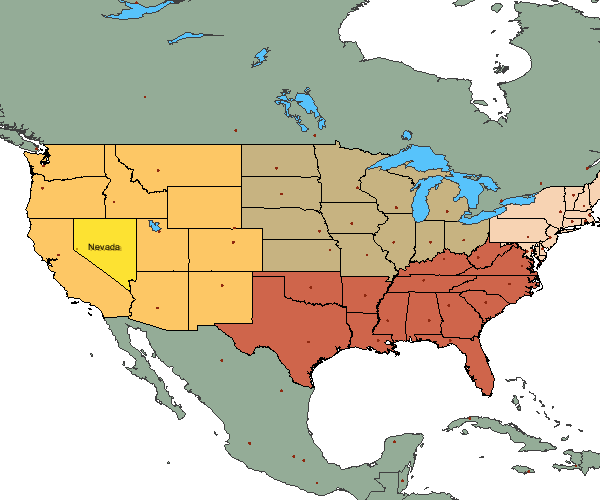HOW TO
Add dynamic layer from a existing layer to the map using Java Connector API
Summary
There might be a need to add dynamic layer from an existing layer (a.k.a cloned layer) into the map object using ArcIMS Java Connector API. The thinking behind adding a dynamic layer would be to zoom to either set of features or to an envelope and change the rendering.
Comments within the code discuss:
-------------------------
- How to clone a layer from a existing layer (layer defined in the map configuration file)
- How to add spatial query to the new layer
- How to modify the rendering elements.
Note:
Dynamic layers will not work with ArcMapImage (MXD) service
Procedure
Code:
try {
//Create new connection to the server
//In this example we are using TCP Scheme
ConnectionProxy cp = new ConnectionProxy();
cp.setHost("imstest1");
cp.setPort(5300);
cp.setConnectionType("TCP");
cp.setService("NorthAmerica");
cp.setDisplayMessages(false);
//Create a new map object for the above service
Map map = new Map();
map.initMap(cp,91,true,true,true,true);
map.setHeight(500);
map.setWidth(600);
map.getLegend().setDisplay(false);
map.setScaleSymbols(true);
//Create new feature layer
FeatureLayer flayer = new FeatureLayer("clonedlayer",null,null);
flayer.setFeatureClass("polygon");
flayer.setVisible(true);
flayer.setName("mynewclone");
//Set the datasource for the new layer
Dataset ds = new Dataset();
ds.setFromLayer("States");
flayer.setDataset(ds);
//Create a new filter and specify the spatial query
String whereExp = "STATE_NAME='Nevada'";
Filter filter = new Filter();
filter.setWhereExpression(whereExp);
filter.setGlobalEnvelope(true);
//Set the filter on the new layer
flayer.setFilterObject(filter);
//Create new symbol
SimplePolygonSymbol sps = new SimplePolygonSymbol();
sps.setAntialiasing(true);
sps.setBoundaryColor("0,0,0");
sps.setBoundaryWidth(2);
sps.setFillColor("255,255,0");
sps.setFillTransparency(0.5);
sps.setFillType("solid");
//Add to renderer
SimpleRenderer sr = new SimpleRenderer();
sr.setSymbol(sps);
//Create a label symbol
TextSymbol ts = new TextSymbol();
ts.setAntialiasing(true);
ts.setFontSize(9);
ts.setShadow("45,0,0");
//Add to renderer
SimpleLabelRenderer slr = new SimpleLabelRenderer();
slr.setField("STATE_NAME");
slr.setSymbol(ts);
//Create Group renderer
GroupRenderer gr = new GroupRenderer();
//Add above two renderes to the group renderer
gr.addRenderer(sr);
gr.addRenderer(slr);
//add group renderer to the new layer
flayer.setRenderer(gr);
//add the new layer to the map layer collection
map.getLayers().add(flayer);
// Add this line to send GET_IMAGE request rather than GET_FEATURE
map.sendImageRequest();
map.refresh();
String mapURL = map.getMapOutput().getURL();
System.out.println(mapURL);
} catch (Exception e) {
System.out.println(e.getMessage());
}Note:
Typically Filter object is associated with Map Object for sending a GET_FEATURE request. In this example we are interested in getting an image rather than features. Map.sendImageRequest() method indicates that we would like to send a GET_IMAGE request instead of a GET_FEATURE- Above code uses the following imports :
Code:
import com.esri.aims.mtier.io.ConnectionProxy;
import com.esri.aims.mtier.model.map.Map;
import com.esri.aims.mtier.model.map.layer.FeatureLayer;
import com.esri.aims.mtier.model.workspace.Dataset;
import com.esri.aims.mtier.model.map.layer.query.Filter;
import com.esri.aims.mtier.model.map.layer.renderer.symbol.*;
import com.esri.aims.mtier.model.map.layer.renderer.*; - Sample output generated. Note that the new layer is shown in yellow with the label.

Article ID:000008753
- Legacy Products
Get help from ArcGIS experts
Download the Esri Support App